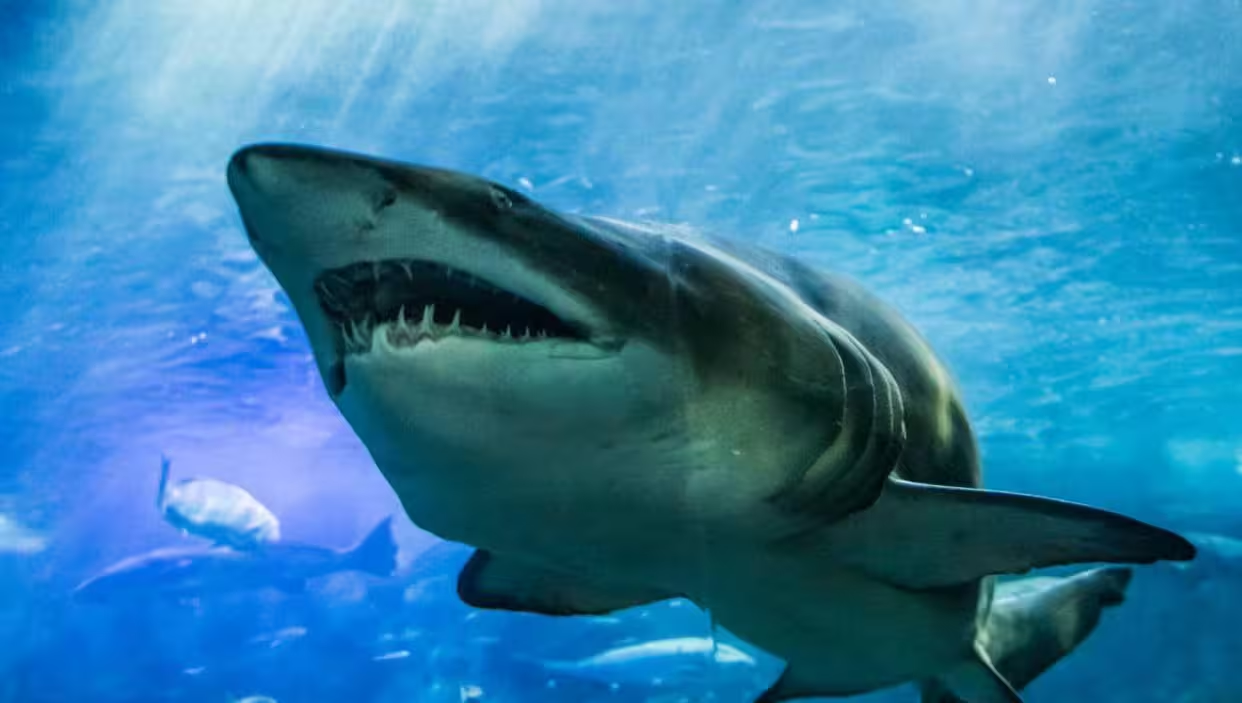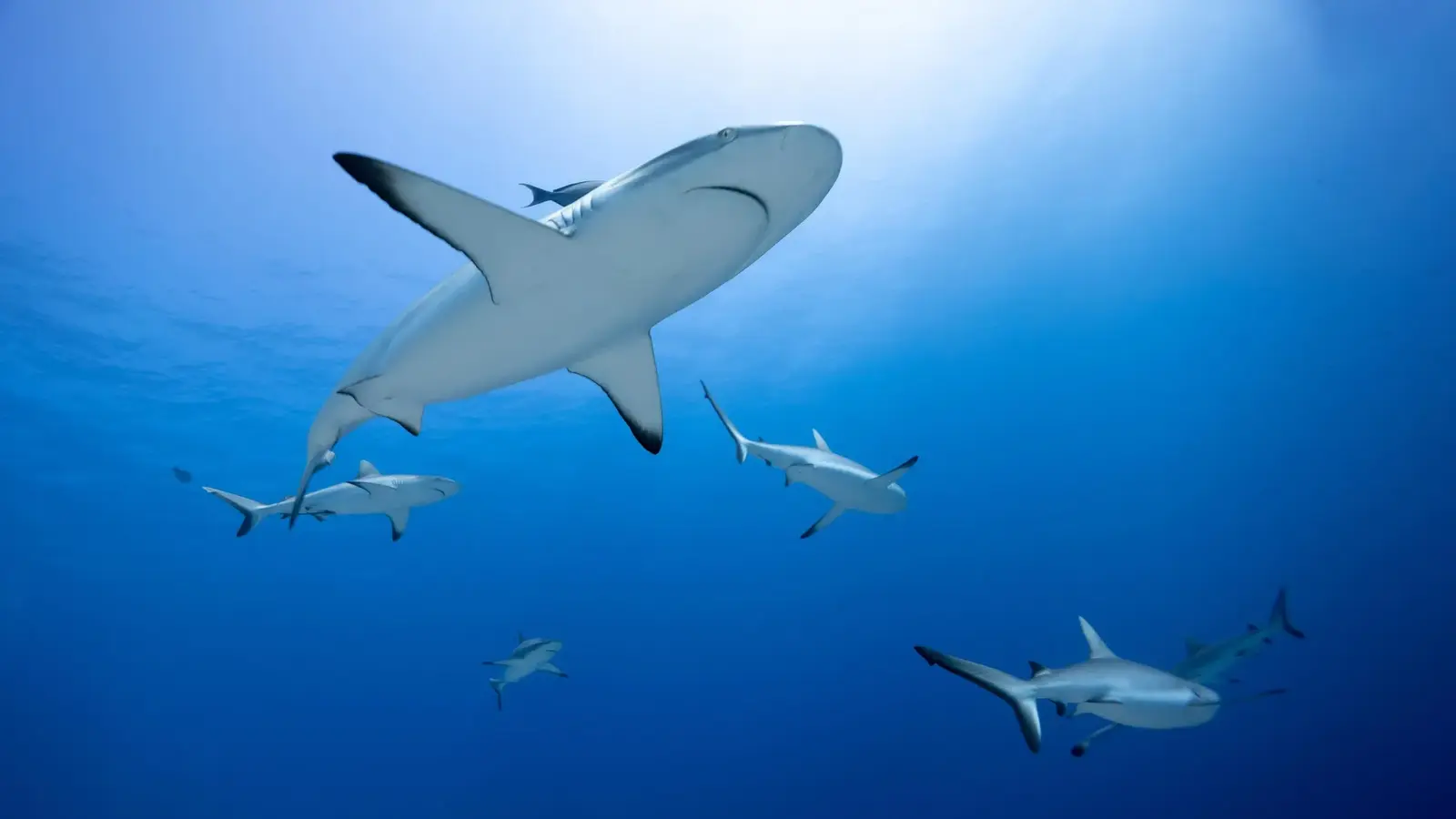5 Minutes
When nature’s cutting edge dulls under changing chemistry
Sharks are renowned for their ability to continuously replace teeth — a biological safeguard that has helped them remain apex predators for millions of years. New laboratory research from Heinrich Heine University Düsseldorf (HHU) shows, however, that ocean acidification can make even these mineralized dental tools brittle, corroded and structurally weaker. The finding has direct relevance for marine ecology and offers a clear call-to-action for developers of environmental sensors, materials scientists and conservation technology platforms.
Study design and tech-enabled methods
Researchers tested discarded Blacktip reef shark teeth under two pH scenarios that represent present-day and projected future oceans. Divers collected more than 600 shed teeth from an aquarium; 16 intact samples were incubated across 20-liter tanks set to pH 8.1 (today’s average) and pH 7.3 (a forecast for the year 2300 under high-CO2 scenarios). Over eight weeks, scientists documented surface damage, root corrosion and changes in circumference using microscopy, imaging and image-analysis workflows.
This experiment highlights the intersection of classical wet lab techniques and modern digital monitoring: high-resolution imaging, automated circumference measurements and data logging for pH control were essential to quantify how chemical environments degrade biomineralized tissue.
Key findings: microscopic decay with macroscopic consequences
Compared with teeth held at pH 8.1, samples exposed to more acidic water displayed visible cracks, holes and intensified corrosion across both crown and root. Surface irregularities made teeth appear larger in two-dimensional images, even though no actual growth occurred. While a roughened edge could temporarily boost cutting performance, the net effect is increased fragility and a higher risk of catastrophic tooth breakage during feeding.
The research team noted that shark teeth — though composed of highly mineralized phosphate compounds — are not immune to chemical dissolution under acidified conditions. Even moderate pH drops may accumulate damage over time, particularly for species with slower tooth replacement cycles.

Technology implications: sensors, modeling and materials R&D
This study opens multiple tech-driven response pathways:
Environmental monitoring and sensor features
- Real-time ocean pH sensors and distributed buoys can detect localized acidification hotspots near reefs and aquaculture sites. Essential features include high accuracy (±0.01 pH), long-term drift compensation, low-power telemetry and integration with edge computing nodes.
Comparisons: legacy probes vs next-gen digital platforms
- Traditional glass electrode sensors remain useful for lab work but suffer drift and maintenance problems for long deployments. Next-gen optical and ISFET pH sensors, combined with IoT telemetry and cloud analytics, offer better stability and automated calibration.
Materials science and biomimetic advantages
- Understanding how shark enamel-like structures corrode can inform protective coatings and corrosion-resistant biomaterials. Industry can leverage microscopy data and mechanical testing rigs to design composites that mimic the toughness of natural teeth while resisting acidic degradation.
Product use cases and market relevance
- Conservation tech platforms: Integrate pH, temperature and dissolved CO2 data with AI-driven predictive models to forecast ecological risks to predator species and reef health.
- Aquaculture and fisheries: Use in-situ pH monitoring systems to guide site selection and mitigation strategies for vulnerable species.
- Materials R&D: Labs and startups can develop corrosion-resistant biomaterials inspired by shark dentition for medical implants, cutting tools and marine hardware.
The market for ocean monitoring and coastal tech is expanding rapidly as regulators and companies invest in climate resilience. Sensors, edge devices and cloud analytics are the commercial levers that can translate findings like HHU’s into early-warning systems and mitigation products.
Limitations and next steps for research and product development
This study used non-living teeth, so mechanisms like remineralization or accelerated tooth replacement in living sharks could alter outcomes. Future work should combine in-vivo studies, mechanical stress testing and computational materials models to quantify energy costs for tooth repair under acidified conditions.
From a product perspective, manufacturers should prioritize ruggedized, low-drift pH sensors and interoperable data platforms that feed into ecological models. R&D teams in materials science can partner with marine biologists to develop coatings and composites that resist phosphate-mineral dissolution.
Conclusion: an ecosystem problem that technology can help illuminate
The finding that acidifying seas can weaken shark teeth underscores how climate-driven chemistry changes cascade through food webs. For technologists and innovators, the research defines concrete opportunities: better ocean sensing networks, AI-powered predictive tools, and materials engineering inspired by nature’s designs. These solutions are not just marketable products — they are practical instruments to protect predators whose survival depends on seemingly small microscopic structures.
By combining high-fidelity environmental sensors, data-driven modeling and biomaterials R&D, the tech community can help translate laboratory insights into field-ready tools that monitor, predict and mitigate the biological impacts of ocean acidification.
Source: sciencedaily


Leave a Comment